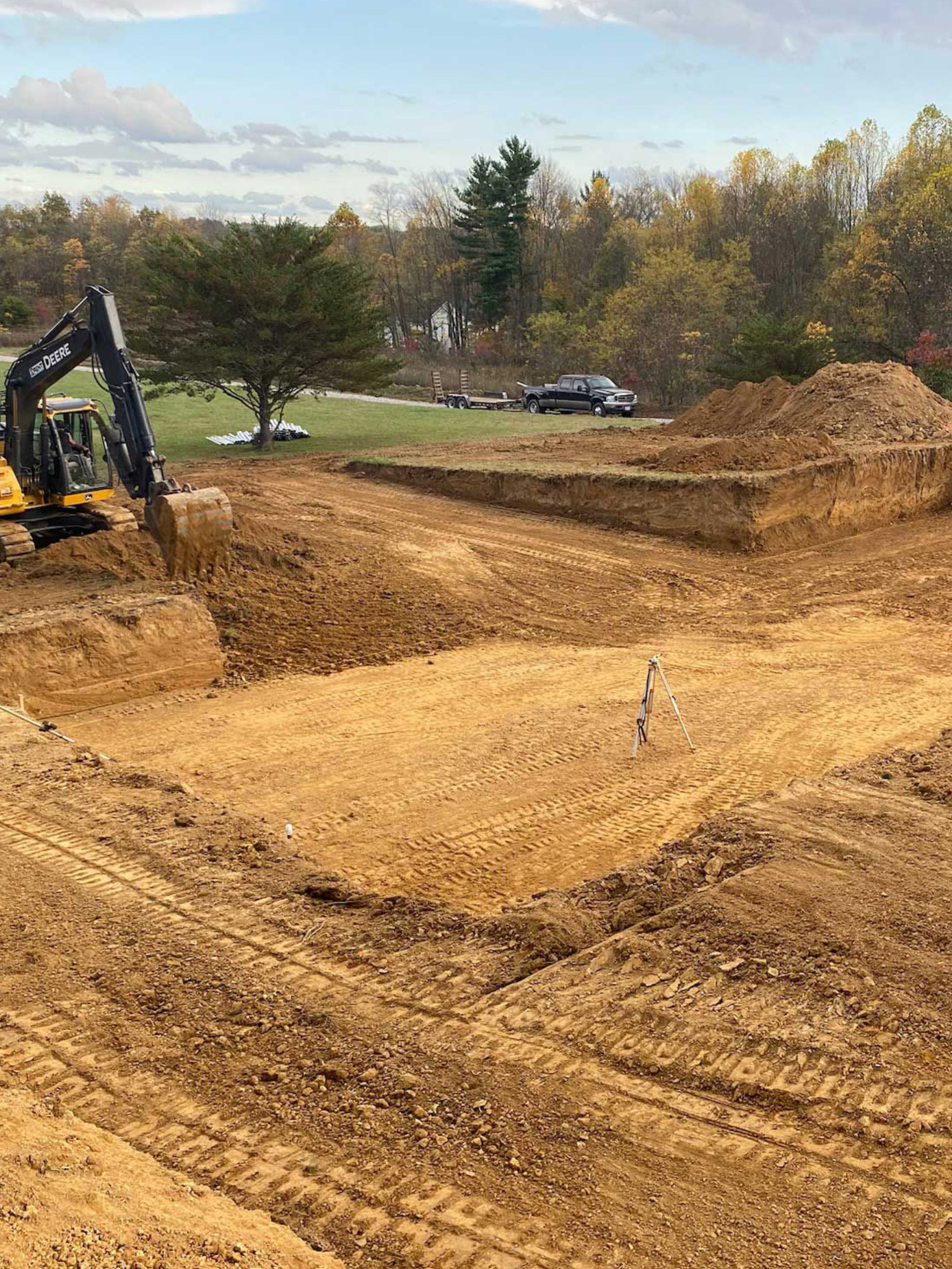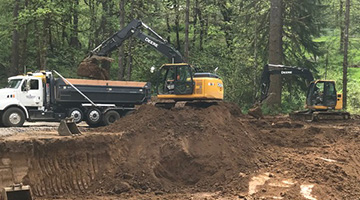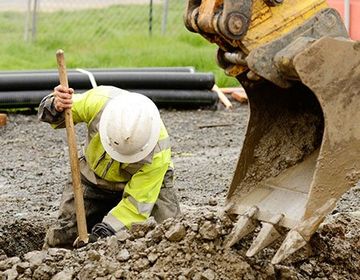Lancaster Trenching - Expert Trenching Solutions in Lancaster, Ohio
Lancaster Trenching - Expert Trenching Solutions in Lancaster, Ohio
Blog Article
Extensive Exploration: The Scientific Research Behind Superior Excavation Practices
The realm of excavation practices is a domain name where science links with workmanship to discover the mysteries hidden below the planet's surface. From old hand tools to modern-day hydraulic excavators, the advancement of excavation techniques has been a testament to human ingenuity and technological innovations. What truly establishes premium excavation methods apart is a deep understanding of geological concepts, coupled with the utilization of advanced tools and methods. By exploring the scientific research behind these methods, we can reveal the keys that exist underneath our feet and appreciate the precision and expertise that enter into every dig.
Evolution of Excavation Techniques
Throughout history, the advancement of excavation techniques has played a critical duty ahead of time building methods and archaeological explorations. From the rudimentary tools used by our forefathers to the innovative equipment utilized in contemporary times, the development of excavation approaches has considerably transformed how we approach different jobs.
In ancient times, hand-operated labor with fundamental tools such as pickaxes, wheelbarrows, and shovels was the key technique of excavation. This labor-intensive process restricted the deepness and scope of excavations, frequently resulting in slow-moving progression and restricted accessibility to certain websites. As civilizations advanced, so did the tools and methods made use of for excavation.
The Industrial Revolution noted a transforming factor in excavation practices with the intro of steam-powered equipment. In modern times, modern technology plays an essential duty in excavation, with advancements like GPS systems, drones, and 3D scanning improving accuracy and effectiveness in the area.
Duty of Modern Technology in Excavation

The assimilation of innovative technology has actually fundamentally changed the field of excavation, boosting precision and efficiency to unmatched levels - dump truck companies in ohio. One of the crucial technological innovations that has significantly affected excavation techniques is the usage of General practitioner systems.
Furthermore, the development of 3D modeling and simulation software program has streamlined the planning procedure for excavation projects. Designers and drivers can now envision the entire excavation process prior to beginning, identifying prospective obstacles and optimizing operations. Combined with this, the implementation of drones in excavation activities has assisted in aerial studies, volumetric measurements, and website examinations with unrivaled rate and accuracy.
Geological Concepts in Excavation
An understanding of geological principles is vital for making certain the structural honesty and stability of excavation websites. Geological factors play an essential role in figuring out the feasibility and security of excavation projects (excavating ohio). One vital geological concept to take into consideration is the sort of dirt or rock present at the website. Different dirt Full Report types, such as gravel, clay, or sand, have differing degrees of stability and require different excavation techniques. For example, natural dirts like clay might need extra support to stop collapses, while sandy soils may be prone to erosion during excavation.
Additionally, the geological structure of the area, including mistakes, cracks, and rock developments, need to be very carefully examined to determine potential risks and challenges. Digging deep into near mistake lines or unsteady rock formations can lead to instability and potential risks. By performing thorough geological studies and evaluation, excavators and engineers can develop methods to alleviate dangers and guarantee the effective completion of excavation jobs. Ultimately, integrating geological principles right into excavation practices article source is essential for attaining safe, effective, and lasting results.

Newest Devices for Excavation
In the realm of excavation techniques, modern advancements in tools have changed the effectiveness and precision of excavation procedures. These drones can give in-depth aerial studies of excavation sites, offering real-time information on topography and prospective risks.
An additional cutting-edge device getting popularity is the execution of 3D printing innovation for creating personalized excavation devices. This permits the manufacturing of specialized tools that are customized to the certain requirements of a task, boosting effectiveness and decreasing downtime.
Furthermore, improvements in materials scientific research have led to the growth of stronger and more long lasting excavation tools. lancaster excavation. Tungsten carbide-tipped excavator attachments, for example, deal exceptional performance in difficult ground problems, enhancing performance on-site
Science's Effect on Excavation Practices

In addition, scientific research study on soil mechanics and geotechnical design has supplied valuable understandings into soil actions, enabling excavation professionals to make educated decisions pertaining to excavation techniques and dirt stabilization techniques. Generally, scientific research continues to drive advancement and renovation in excavation practices, making blog here excavation jobs extra efficient, cost-effective, and lasting.
Conclusion
To conclude, the evolution of excavation strategies has actually been considerably influenced by developments in technology and a much deeper understanding of geological concepts. The most recent tools and tools made use of in excavation have improved efficiency and accuracy in the area. The application of clinical understanding has significantly enhanced excavation techniques, causing much more efficient and lasting methods for excavating various types of materials.
In the realm of excavation techniques, modern technologies in devices have changed the efficiency and accuracy of excavation processes. By leveraging scientific concepts, the excavation sector has actually been able to considerably enhance performance, accuracy, and safety and security in excavation procedures. GPR permits excavation groups to non-invasively check and map subsurface structures, utilities, and potential risks, allowing them to prepare excavation projects with higher precision and decreased danger of accidents.
Furthermore, scientific research study on soil technicians and geotechnical design has actually supplied important understandings right into soil actions, enabling excavation professionals to make enlightened decisions relating to excavation techniques and dirt stabilization strategies. On the whole, science proceeds to drive advancement and improvement in excavation techniques, making excavation projects extra effective, cost-effective, and lasting.
Report this page